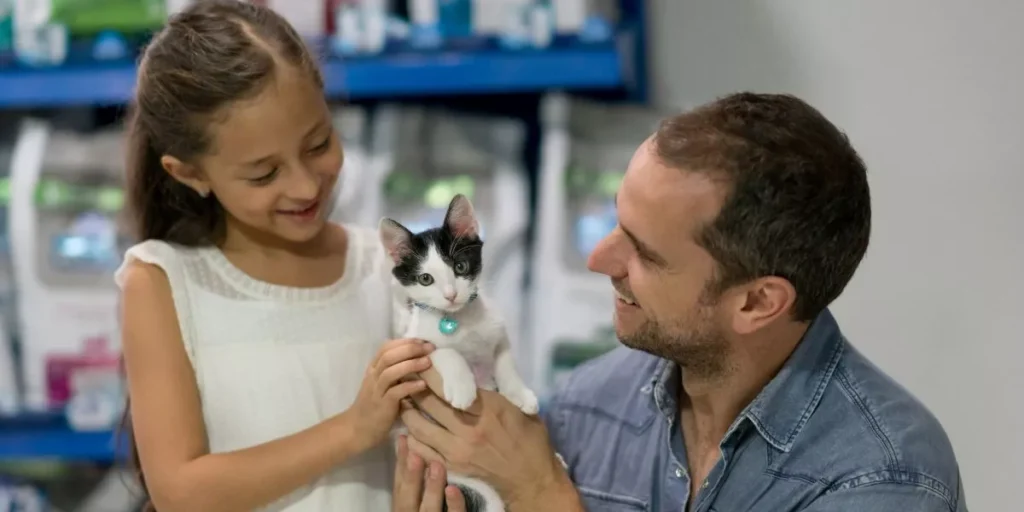The Ultimate Checklist for Adopting a Rescue Cat

When adopting a rescue cat, you’ll want to ensure that you’re fully prepared for this exciting journey ahead. From setting up a safe environment to understanding your new feline companion’s behaviors, each step is crucial for a successful integration. By following this comprehensive checklist, you can lay a solid foundation for a harmonious relationship with your rescue cat. But there’s one aspect that often gets overlooked, and it can make all the difference in your cat’s well-being and happiness.
Preparing Your Home
To ensure a smooth transition for your new rescue cat, decluttering and cat-proofing your home is essential. Start by removing any small items that could be knocked over or swallowed. Secure electrical cords and outlets with cord protectors to prevent accidents. Place houseplants out of reach, as some can be toxic to cats if ingested. Keep all cleaning supplies and chemicals locked away to avoid any potential harm.
Next, designate a cozy space for your cat to retreat to when feeling overwhelmed. This area should include bedding, a scratching post, food, water, and a litter box. Having a safe haven will help your cat acclimate to its new environment more easily.
Inspect your home for any small spaces where your cat could get stuck or hide. Close off any areas that may pose a risk, such as gaps behind furniture or appliances. Finally, make sure windows and balconies are securely screened to prevent any accidental falls. By taking these steps, you’ll create a safe and welcoming environment for your new feline friend.
Essential Supplies
Securing the necessary supplies is crucial when preparing to welcome a rescue cat into your home.
Firstly, you’ll need a litter box and cat litter. Make sure the litter box is large enough for your cat to comfortably move around in.
Next, food and water bowls are essential. Opt for stainless steel or ceramic bowls that are easy to clean. A balanced cat food suitable for your cat’s age and health requirements is a must.
Additionally, invest in a scratching post to help your cat satisfy its natural urge to scratch and to keep its claws healthy.
Toys are important to keep your cat entertained and mentally stimulated. Simple toys like balls, feather wands, and interactive toys can provide hours of fun.
A comfortable bed or blanket will give your cat a cozy spot to rest.
Lastly, a carrier for vet visits and travel is necessary for your cat’s safety.
Understanding Cat Behavior
Understanding a rescue cat’s behavior is key to building a strong bond and creating a harmonious home environment. Cats have unique ways of communicating their needs and emotions. By observing your new feline friend, you can learn a lot about their personality and preferences. For example, a cat may purr when content or knead when feeling happy and secure. On the other hand, behaviors like hissing, growling, or hiding may indicate fear, stress, or discomfort.
Pay attention to your cat’s body language as well. A cat with an arched back and puffed-up fur may be feeling threatened or defensive, while a relaxed cat with ears forward and a gently swishing tail is likely content. Providing your rescue cat with a safe space to retreat to when feeling overwhelmed can help them adjust better to their new surroundings.
Health and Safety Measures
Observing your rescue cat’s behavior can also provide insights into their overall health and help you ensure their well-being through appropriate health and safety measures. Keep an eye on their eating habits, litter box use, and activity levels. Sudden changes in behavior could indicate underlying health issues, so it’s important to consult a veterinarian promptly. Regular vet check-ups, vaccinations, and parasite prevention are essential for your cat’s health.
Ensure your home is a safe environment for your new feline friend. Remove any toxic plants, secure windows and balconies, and eliminate small objects that could be swallowed. Providing a comfortable and clean living space is crucial for their well-being. Additionally, invest in high-quality cat food, fresh water, and interactive toys to keep them mentally and physically stimulated.
In case of emergencies, have a designated area with essential supplies like a carrier, first aid kit, and emergency contact information for your vet. Being prepared for any situation can help you act quickly and effectively in ensuring your rescue cat’s health and safety.
Bonding With Your New Cat
To build a strong bond with your new cat, prioritize creating a calm and welcoming environment where they feel safe and loved. Set up a designated area with a cozy bed, toys, scratching posts, and hiding spots.
Spend quiet time near your cat, allowing them to approach you at their own pace. Use a soft, soothing voice and gentle movements to communicate your affection. Offering treats and engaging in play sessions can also help establish trust and connection.
Respect your cat’s boundaries and signals; if they seem overwhelmed, give them space to retreat and decompress. Regular grooming sessions can be a bonding experience, strengthening your relationship while keeping your cat clean and healthy.
Trending Products










